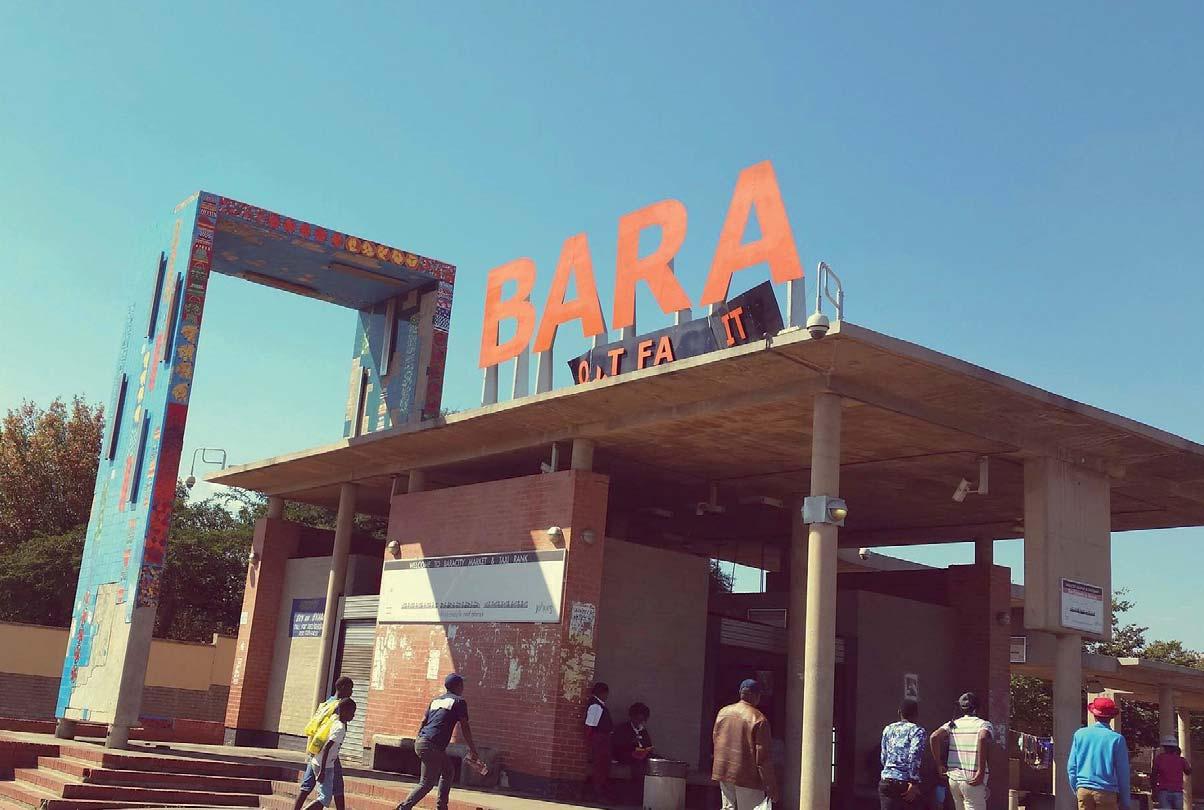
6 minute read
Digging at Vindolanda
from ONA 65
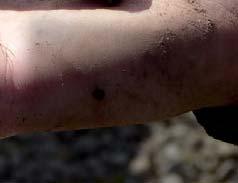
Above: 2nd Century Iron Ballista (Catapult) Bolt Right: David at Heddon on the Wall, 1950 Below: Gladiator glass bowl
Advertisement

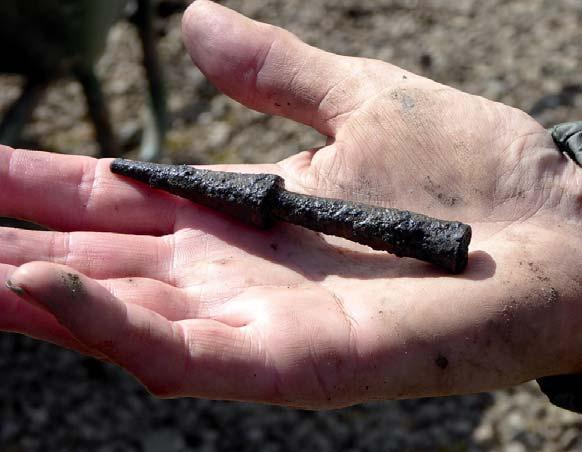
By David Goldwater (51-62)
ONs have a primary connection with the North East, so there’s no need for me to stress how beautiful England’s most northern county is. Always living locally, I have always appreciated the easy access to our county’s treasures as beyond value.
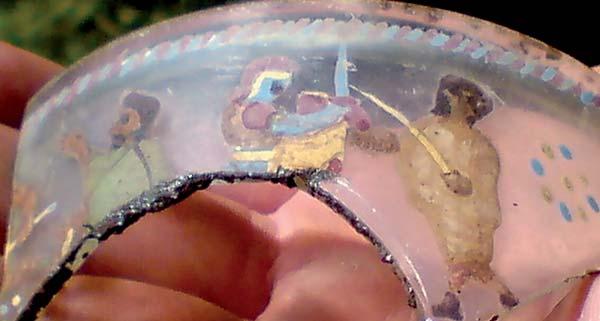
On days out, my dad always headed out of Newcastle along the line of the Military Road, the B6318 running west, built to suppress the Jacobite rebellion of 1745, following the line of Hadrian’s Wall. Most of the Wall ended up in farm buildings and local structures from early days, but enough has remained, both above and below the ground, to keep antiquarians, professional and amateur, intrigued long into the future.
When our own children arrived in the 70s, we too would gravitate westwards into the countryside and having joined the newly formed Vindolanda Trust as Friends, visits to this amazing site became a regular event. Vindolanda, about a mile south of the Wall, dates from around 80AD, an auxiliary fort likely to have been key to the building of this northern frontier a generation later. The fort lies exactly half way across this part of northern England, strategically on the Stanegate Road and was occupied, abandoned and re-occupied several times over its lifetime. The result is a fascinating compression of at least ten forts, the earliest wooden, the later of these built of local stone. The layering has led to an amazing succession of discoveries, almost unique in British archaeology.
Most famous are the Vindolanda writing tablets, recording daily life: letters from soldiers asking for socks and underwear, a birthday party invitation to the fort’s commander’s wife, requests for payment, lists of goods supplied and troop deployments. Organically preserved in the peat and clay, Roman soldiers used to cover up redundant structures, these, along with textiles, leather goods, wooden objects and flora and fauna have all survived thanks to the oxygen-free conditions. Vindolanda has the largest collection of footwear in the Roman Empire, over 5,000 items, with many delicate designs including makers’ stamps.
It was not until the arrival of Professor Eric Birley, a Lancastrian, and founder of Durham University’s School of Archaeology, where he served as both lecturer and Professor, that serious archaeology began there. Birley moved to the house at Chesterholm (now the Vindolanda museum site, Chesterholm Museum) and following the early excavations of the 30s, his son Robin oversaw the foundation of the Vindolanda Trust and its exciting programme of archaeology. The Trust is an independent charity and controls two sites, the Fort at Vindolanda and the Roman Army Museum, about seven miles to the west, at Carvoran. Though an independent trust, Vindolanda is a protected scheduled monument and has to comply with the requirements of the Department of Culture, Media and Sport.
For the past dozen summers, under the leadership of Robin Birley’s son Andrew, I have taken part in Vindolanda’s volunteer programme, with around 600 applicants helping the Trust in its fantastic work. The season lasts from April to September, in fortnightly periods. ‘Diggers’ come from all walks of life, from all over the world and every age group. Because of its growing fame as a unique archaeological treasure, visitor numbers have grown each year and volunteers enjoy talking to visitors about their experience as budding archaeologists. The excavations concentrate on both the fort areas and the Vicus or civilian village.
Most often comes the question, “Have you found anything today?” Although we are more than aware that, altruistically, we are all digging and trowelling for the next group, next month, next year, or even century, the excitement of making an original discovery fills each of us with great hope. Even working next to a pair of diggers who lift something out of the ground for the first time, for perhaps, 1,800 years is something quite unique. Some of the most frequent finds are pieces of Samian pottery, elaborately decorated and from an area of Gaul, now Northern France. If the potter’s name can be found on a stamp at the base, the object takes on a much greater importance. The whole purpose of archaeology can be summarised as a study of the lives of the people of another era and to be able to personalise objects makes the exercise all the more vivid.
On my own list of discoveries, the accompanying photos shed a little light on why digging at Vindolanda has become such a highlight of each summer throughout the last few years. The Gladiator glass bowl was actually unearthed by two neighbouring volunteers, but I was fortunate to be in a position to move in rapidly with my camera. A section of this hand decorated glass vessel was found to match three other pieces, one of which was already in the museum and had been found 19 years before and nearly 100 metres away. Fantastic! A digger’s first shoe find is always
David with digging buddy, Richie Milor Brick with VI Legion stamp
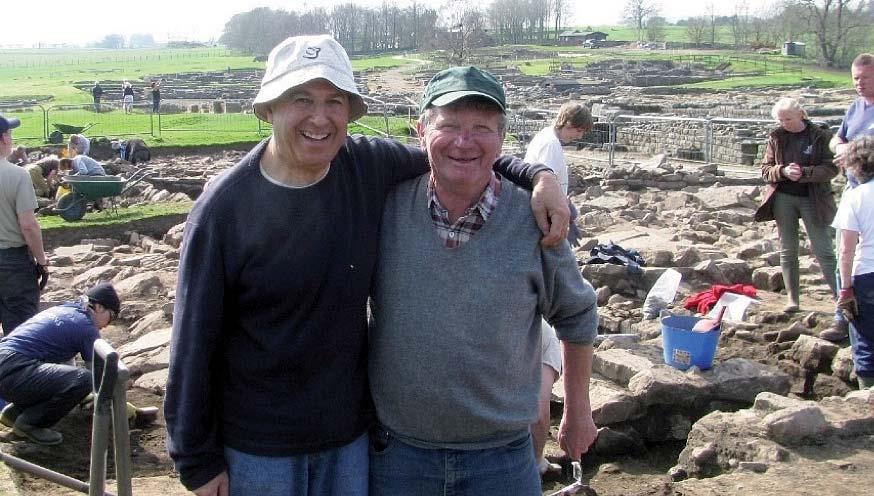
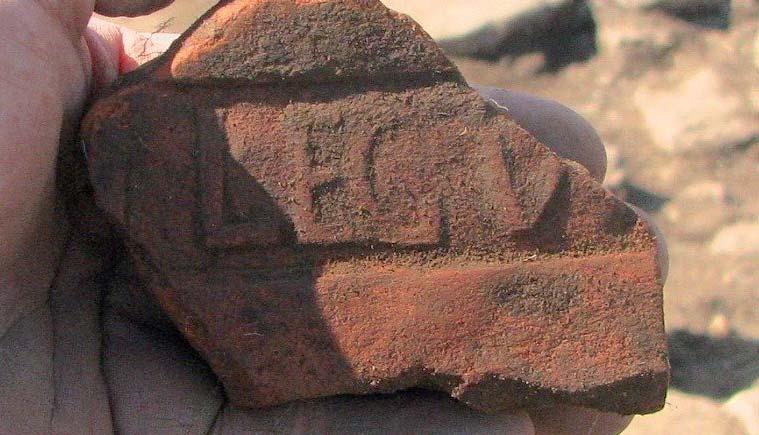
a triumph, only to be greeted by a deflating, “Not another shoe!” from one of the dig supervisors. Even being in the proximity of the discovery of a writing tablet is always an exciting experience and so it was this year when the first of a number of these unique written records came out of the “crud’’. Kept continuously wet, they are whisked off to the lab for treatment prior to careful conservation and deciphering. Two years ago, I almost threw away a small angular black shape which resembled a piece of mud from the sole of a boot. It turned out to be a Whitby Jet charm in the shape of a tiny foot. It would have been a lucky charm or votive object to ward off evil spirits. A brick inscribed with the stamp of the noted VI Legion provided proof of its skilled engineers inhabiting Vindolanda.
With an estimated two more centuries of archaeology ahead at this world famous gem in Northumberland, covering a huge area as yet untouched, who knows what lies ahead?
For more information visit www.vindolanda.com
A History of the RGS in Its People: Request
This issue sees a pause in the series which has proved so popular with ON readers and which has attracted many personal recollections of notable staff members over the last few generations of school students. In the next issue, we hope to feature WG ‘Bill’ Elliott (52-88), who is not only a contemporary very popular former teacher, tutor and coach, but also a most active participant in very many RGS and ONA activities. Reminiscences, please, as soon as possible to the ONA Office at ona@rgs.newcastle.sch.uk or by post to the address in the inside cover of this issue.






